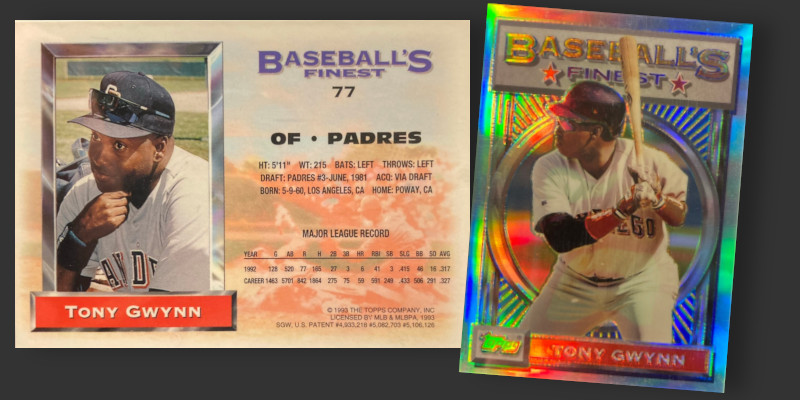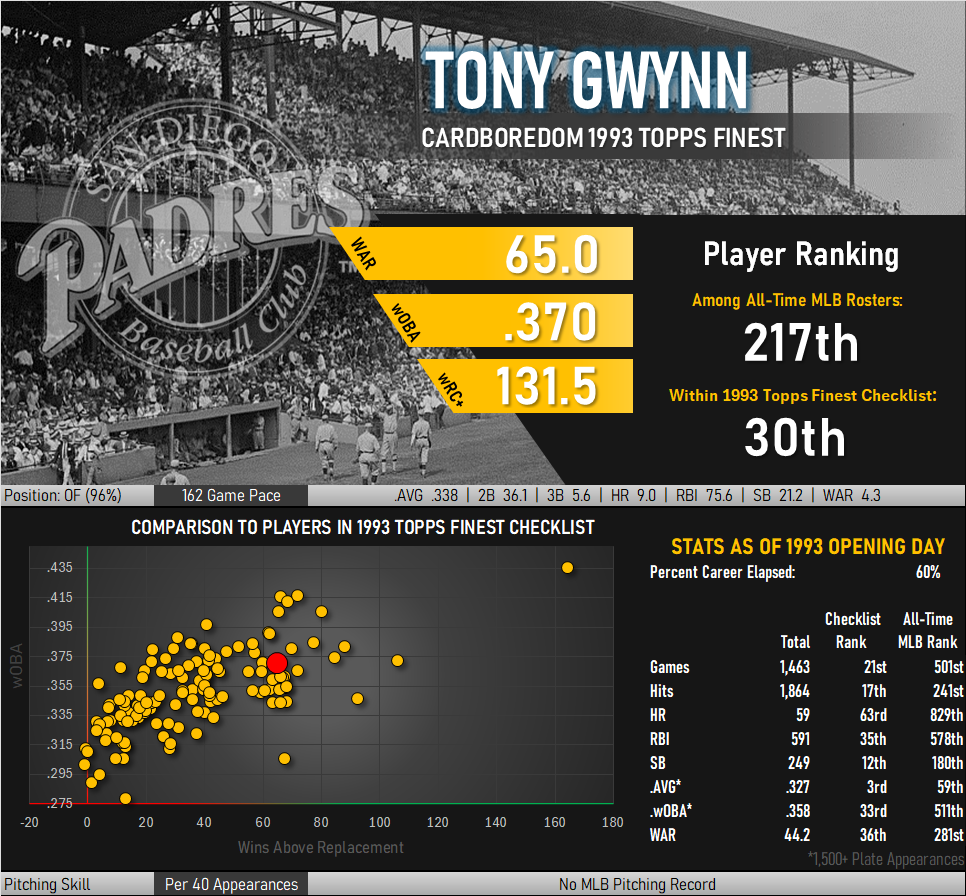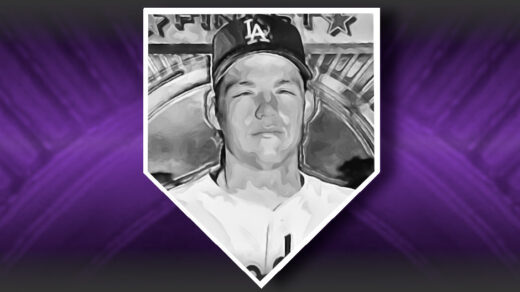I recently wrote about Wade Boggs batting .400 over a 162 game stretch in the mid-1980s. There was a more recent run at the .400 mark that was truncated by the 1994 players’ strike. Tony Gwynn batted .394 that season, though it lasted only 110 games. He still managed to make the .400 mark if observers carry over 52 games adjacent to the ’94 season. In the 162 games played between July 27, 1993 and May 13, 1995 he was 251 for 624, good enough for a .402 batting average.
Gwynn had always been known as a speedy contact hitter with an excellent eye. A student of hitting, he videotaped his plate appearances and reviewed each one to gain insight into his batting mechanics long before the sport realized the value in the activity. Ted Williams, baseball’s last widely-acknowledged .400 hitter, recognized Gwynn’s dedication and the two quickly bonded. Both had excellent eyesight with Gwynn reportedly having almost inhuman 20/10 vision against Williams’ famous 20/15.

One of the reasons Williams stands out above most Hall of Famers is the lack of age-related decline seen in his production. The previous post about Wade Boggs’ quest for .400 included a discussion of his batting average tailing off to the low-.300s over the back half of his career. Gwynn was a statistical rival of Boggs throughout the 1980s but really pulled ahead in the 1990s as his production actually improved. The stats on his 1993 Finest card represent approximately the midpoint of Gwynn’s career and shows lifetime .327 batting and .433 slugging averages. He finished his career with marks of .338 and .459, raising both by double digits despite the dead weight of 11 seasons already in the books.
STRIKEOUTS
I mentioned Gwynn’s keen batting eye, a characteristic present in both Ted Williams and Wade Boggs. What is astounding is the way this was manifested so differently between Gwynn and the two Boston hitters. Williams and Boggs both refused to swing at bad pitches, preferring to take a walk rather than reach for a potentially hittable offering. Gwynn rarely walked, averaging just 52 per 162 games. This implies he would reach for pitches out of the strike zone if he felt he could do something productive with the ball. Now consider how rarely he struck out given this free-swinging philosophy. Gwynn was out on strikes only 4.2% of the time, less than half as often as Williams. Gwynn has more career doubles than strikeouts and only had four seasons in which he was set down on strikes more than 30 times.

BASKETBALL
Gwynn wasn’t just a baseball savant. To this day he remains the record-holder in multiple offensive categories in San Diego State University’s basketball program. On the same day he was drafted by the San Diego Padres he was also selected by the Clippers as a 10th round pick in the NBA draft.
ANOTHER IMPACT ON THE SPORT
Gwynn died from an on/off battle with salivary gland cancer in 2014. He had been a multi-decade user of dip tobacco, continuing baseball’s extensive association with oral products. His early death rippled through the sport’s culture and efforts to reduce usage and discourage young players from beginning its use intensified. In death he may have accelerated what so many public service announcements tried to accomplish.









